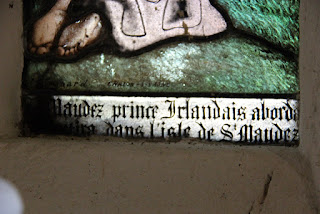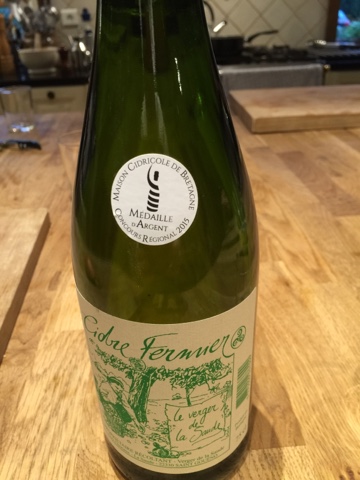Today is pancake day and so it is appropriate to talk about the Breton Galette! So much has been written about pancakes generally, they are almost ubiquitous around the world but surprisingly it was not until I came to Brittany that I discovered the uniqueness and beauty of the Breton Galette.
What makes the Briton Galette unique is that it is made from buckwheat. The fact that it is not actually a wheat but a fruit seed more related to sorrel and rhubarb means that people sensitive to gluten can also enjoy it. Buckwheat has been grown in Brittany since the 15th century. It was a staple diet for the poor and particularly appropriated as it grew well even in poor soils. It was the Duchess Anne of Brittany (
1477 – 1514) who first ensured its widespread cultivation in Brittany so that her people would not starve. It took only three months to harvest and became known as "100 days of plant", No wonder that Anne is still held in such high regard in Brittany. The galette is such a versatile dish. The secret however is knowing how to make it. The traditional method is a complex skill handed down from mother to daughter over generations. Sadly now many people have lost that knowledge. Most folk in Brittany simply buy their galettes ready made and reheat them at home adding additional ingredients as required. However like most things bought, they are so much tastier and better when home made, Our closest neighbour fortunately has the knowledge and is happy to share it, Although the ingredients are simple the trick is in knowing the method. How to mix the batter and when the texture is right. In the days before food processors, woman would use their arms in a folding method for hours and hours over a large basin of batter to ensure the texture was just right. In fact an unusual form of arthritis developed in Brittany from the practice! Thank God for Kenwood!
For 8 galettes you will need:
250g buckwheat flour
1 egg*
1 tsp of coarse sea salt (Guérande)
100ml milk*
200ml water
butter/lard for cooking the galette
It is best to make the batter the day before if possible. Sift the flour into a bowl making a well in the centre. Add the egg and salt into the well using your hands and gradually including the flour. Add the water to the milk and then add this to the mixture a little at a time until you have a very smooth batter with the texture of a custard. Now place it in the food processor for 8 minutes or so and add more of the milky water until the texture changes to a thin cream. Leave to rest in a cool place (not the fridge!) overnight.
Preheat the oven to 110 degrees cg. Grease a large frying pan with butter or lard and place over a medium heat. If you are lucky enough to have a real fire then use very dry wood and once the BBQ is hot and established, the fragrance from the smoke in the galette is delightful. Stir the batter and put a ladleful into the hot frying pan and twist as you spread it over the base. Cook for a minute or so until the edges are brown and then turn over and repeat. Once it is cooked, place in the oven to keep warm.
The beauty of the galette is now you have made them you can be as flexible and as ingenious as you wish in how to finish them off. Traditionally the Britons would simple place the galette in a bowl of buttermilk and consume for a hearty breakfast. More often today, the galette is served with egg, cheese and ham and at lunchtimes you will see long queues of people waiting for their galette Saucisse (Breton Hot Dog). I have tried to keep off processed foods so prefer to use fresh vegetables as often as possible. In the above dish I used a little cooked smoked duck along with some broccoli and a little French mustard! In Brittany galettes are usually served with a refreshing cup of cider and if you have any cravings for a sweet dessert you can ask for a
crêpe to follow!
* The classical traditional Briton galette would not include an egg or milk in the batter just buckwheat flour and water and a pinch of salt. I have added these ingredients as they have benefited making the batter.































































